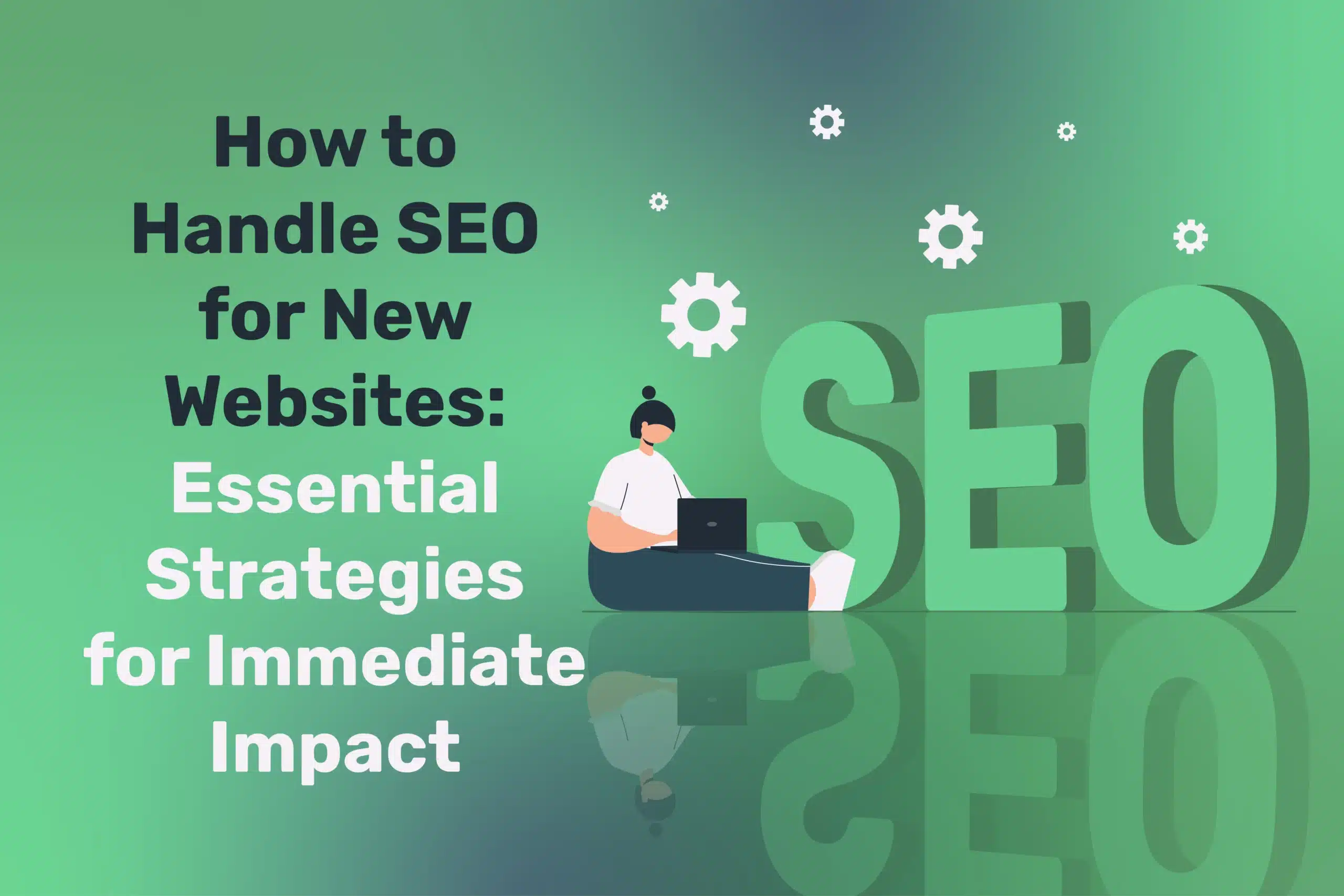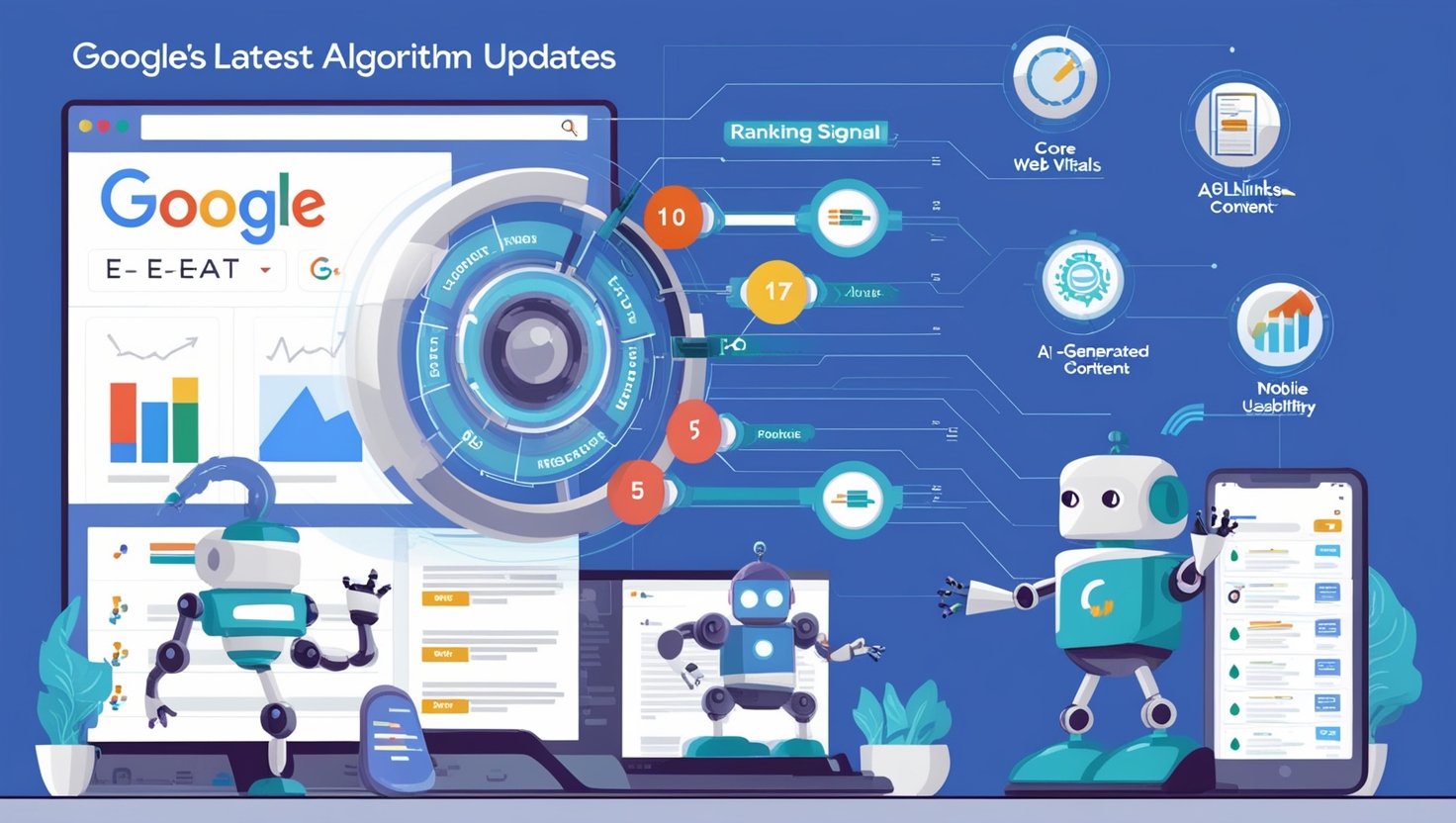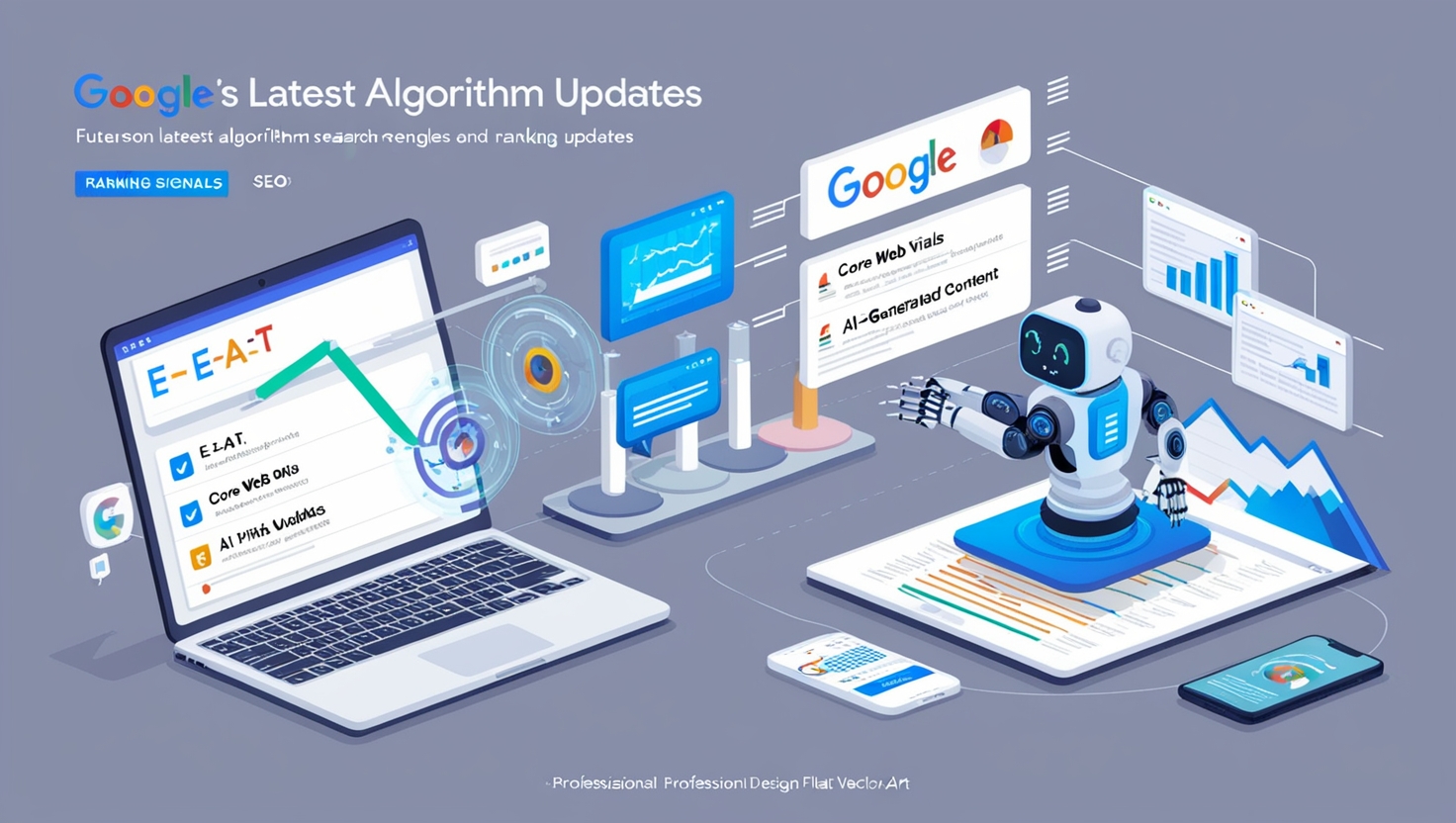
Google Latest Algorithm Updates Explained: How to Future-Proof Your Site
Table of Contents
Google has consistently refined its ranking algorithms over the years—ranging from major named updates like Penguin, Panda, and Hummingbird to core updates that roll out multiple times a year. In 2024, the search giant’s focus remains on providing relevant, high-quality results while stamping out spam, manipulative tactics, and poor user experiences. For site owners, understanding these shifts is vital to remain competitive.
This article summarises Google latest algorithm updates and how they tie into the concept of E-E-A-T (Expertise, Experience, Authoritativeness, Trust). By applying these insights, you can future-proof your site—ensuring consistent visibility instead of abrupt ranking drops whenever Google tweaks its systems.
“Google’s core updates push the needle toward user-centric content and brand credibility. Sites that revolve around genuine expertise rarely face crippling hits,” notes Ciaran Connolly, Director of ProfileTree.
Google Latest Algorithm Updates (2023–2024)
Google’s algorithm continuously evolves to improve search relevance and user experience. From 2023 to 2024, key updates have focused on content quality, AI-driven search enhancements, and combating spam. Understanding these changes helps marketers refine their SEO strategies and stay ahead in an ever-shifting landscape.
Core Updates
Several broad core updates occur yearly, targeting overall content quality and user satisfaction. No single theme (like link spam or short content) is singled out; rather, these updates reevaluate site content holistically. Sites with thin or redundant content often see dips, while truly helpful, well-structured resources rise.
Product Review Updates
Google refined how it ranks product review content—rewarding in-depth, first-hand experience reviews (photos, personal usage tips). Sites rewriting generic manufacturer specs see demotions. This approach emphasises unique insight, bridging E-E-A-T for e-commerce or affiliate content.
Spam-Fighting Systems
Periodic “SpamBrain” updates crack down on link spam, hidden text, or cloaked content. If your domain accumulates suspicious links, you risk partial de-indexing. Meanwhile, AI-generated content with zero human oversight might be flagged as spam if it’s purely produced for search manipulation.
Page Experience and Core Web Vitals
While the Page Experience update was introduced around 2021, incremental improvements continue. LCP, FID, and CLS remain crucial. Sites ignoring performance, stability, or mobile usability risk subtle ranking declines.
Understanding E-E-A-T in 2024
Google’s E-E-A-T (Experience, Expertise, Authoritativeness, and Trustworthiness) remains a crucial factor in ranking content, especially in 2024. With AI-generated content on the rise, Google places even greater emphasis on firsthand experience and credibility. Websites that showcase real expertise, cite authoritative sources, and prioritise user trust will have a competitive edge in search rankings.
Breaking Down E-E-A-T
- Expertise: Are authors or content creators knowledgeable in their field?
- Experience: Demonstrations of real-life usage, case studies, or personal stories add credibility.
- Authoritativeness: Site’s domain-level trust, endorsements from experts or reputable sources, consistent branding.
- Trust: Overall reliability—secure domain, transparent content, accurate info.
Why It Matters
Google relies on signals that your site’s content can be trusted. E-E-A-T helps differentiate well-researched resources from shallow or aggregated copy. For YMYL (Your Money or Your Life) topics—like health, finance, or legal—these factors are particularly scrutinised.
Practical Implementation
Show author bios with credentials. Cite sources. Demonstrate personal experience if you’re reviewing or instructing. Maintain site security (HTTPS) and a professional layout. If you have user-generated content, moderate it to avoid misinformation.
“E-E-A-T resonates with real user queries. If your brand or authors exude authenticity and knowledge, Google’s ranking systems reward you,” adds Ciaran Connolly.
Adapting Content Strategies to Core Updates

Google’s core updates continually refine how content is evaluated, rewarding high-quality, user-first material while penalising low-value or misleading content. To stay competitive, focus on depth, originality, and relevance. Regularly audit existing pages, update outdated information, and align with E-E-A-T principles. Prioritise clear, helpful content over keyword stuffing or clickbait tactics to maintain visibility and engagement.
Genuine Depth and Originality
Shallow rewrites of widely available info rarely excel. Instead, go deeper: add data-driven insights, quotes from industry experts, or unique angles. If your site covers “best vegetarian diets,” incorporate personal meal plans or result photos.
Regularly Refreshing Evergreen Pieces
Core updates often re-evaluate older articles. If your piece still references 2018 stats or outdated guidelines, it may lose rank to newer content. Periodic refreshes with updated data, new images, or improved structure signal to Google you maintain relevant info.
Ensuring No Keyword Stuffing
While including target phrases remains important, overusing them or producing forced synonyms can appear spammy. Instead, cover synonyms or related subtopics naturally. If an article is about “car insurance,” mention collision coverage, third-party references, or typical policies—not repetitive use of “car insurance quotes” in every paragraph.
Addressing Thin or Duplicate Content
Merge or remove near-duplicate pages that only exist to target slight keyword variations. If each page lacks substantial differentiation, Google might see them as redundant. A single comprehensive resource often ranks better than multiple scattered, watered-down ones.
Navigating Link-Related Changes
Google continues to refine how it evaluates links, prioritising quality over quantity. Recent updates focus on detecting unnatural patterns, devaluing spammy backlinks, and emphasising contextually relevant, high-authority sources. To stay compliant, conduct regular backlink audits, disavow toxic links, and focus on organic link-building through valuable content and genuine industry relationships. Adapt your strategy to align with Google’s evolving link policies to maintain a strong and trustworthy backlink profile.
Quality Over Quantity
Recent updates further stress link quality—relevant editorial links from established sites. Low-quality or purchased links in spammy directories or unrelated blogs risk penalties. If you’re link-building, focus on genuine outreach, valuable guest posts, or building top-notch content that naturally attracts links.
Disavowing Toxic Links
If a competitor sabotage or old SEO tactics left you with spammy backlinks, consider the disavow tool. But do so cautiously—disavowing real, beneficial links can harm you. Usually, only truly irredeemable link farms or adult/spam domains should be disavowed. Evaluate link contexts thoroughly.
Anchor Text Diversity
Exact-match anchor text from too many external sites screams manipulation. Keep brand anchors, partial match, or natural references as a healthy majority. Google’s link spam updates specifically look for unnatural patterns in anchor usage.
Fine-Tuning Technical Elements for Algorithm Changes

As Google’s algorithms evolve, technical SEO must adapt to maintain site performance and rankings. Prioritise factors like Core Web Vitals, structured data, and mobile-friendliness. Regularly audit crawlability, indexability, and site speed, ensuring that pages load efficiently and provide a seamless user experience. Implementing schema markup and optimising internal linking can further align with search engine expectations, improving visibility in an ever-changing digital landscape.
Schema and Rich Snippets
With Google awarding more SERP features—like FAQ expansions, “people also ask,” or review snippets—sites that implement structured data thrive. For instance, an events site with Event schema can appear in “Upcoming events” carousels. Monitor Google’s developer docs for updated schema guidelines.
Page Experience Tweaks
Check your Core Web Vitals or run a Lighthouse audit monthly. If your site lags in FID or LCP after adding new scripts or design changes, rectify it quickly. A core update might penalise or ignore slow pages that hamper user satisfaction.
JavaScript SEO
If your site uses heavy JS frameworks, ensure essential content is server-rendered or prerendered. Some Google updates can stumble on client-side rendered pages if not properly set up. Tools like dynamic rendering or SSR (server-side rendering) ensure Google sees the content instantly.
Consolidate Mobile vs. Desktop
Mobile-first indexing means your mobile version dictates your search ranking signals. If you have separate m-dot site or a major difference in mobile content, keep them consistent. Missing alt text or reduced content on mobile can degrade your overall ranking, not just mobile SERPs.
Managing AI-Generated Content Under New Guidelines
With AI-generated content becoming more prevalent, Google has introduced stricter guidelines to ensure quality and originality. The focus is on E-E-A-T (Experience, Expertise, Authoritativeness, and Trustworthiness), rewarding content that demonstrates human oversight and value. To align with these guidelines, businesses should fact-check AI-assisted content, add expert insights, and avoid mass-produced, low-quality outputs. Transparency—such as disclosing AI involvement—can also help maintain credibility and search rankings.
“Helpful Content” Emphasis
Google’s more sophisticated detection tries to root out purely machine-spun or fluff pieces that don’t add real value. If you use AI for drafting, thoroughly edit, add personal insights, and ensure uniqueness. Repetitive or generic AI text can flounder under these “helpful content” updates.
Authorship Transparency
If you employ AI for partial content creation, highlight the human editors or authors who refine it. Provide an author box explaining credentials. This approach addresses E-E-A-T’s “expertise” factor—pure AI text with no clear human oversight might appear untrustworthy.
Quality Checks
Run final content through fact-checking. AI text can occasionally invent references or data. Also watch for unnatural wording or erroneous statements. Google’s updates penalise misinformation or obviously non-human style. Real human curation keeps the piece valuable and correct.
“AI content is fine if it’s curated by humans for accuracy and uniqueness. Untouched AI spam is usually flagged and demoted,” notes Ciaran Connolly.
Coping with Algorithm Updates: Defensive and Future-Proof Strategies

Google’s frequent algorithm updates can disrupt rankings, but a defensive, future-proof strategy helps maintain stability. Focus on high-quality, user-first content, strong technical SEO, and ethical link-building. Diversify traffic sources—organic, social, and referral—to reduce dependency on search fluctuations. Regular audits, staying informed on industry trends, and adapting to new ranking signals ensure long-term resilience.
Diversify Traffic Sources
Relying solely on Google’s SERPs is risky. Build brand presence via social media, email marketing, direct visits, or niche communities. Then if a Google update dips your traffic, you aren’t immediately crippled.
White Hat Link-Building
Avoid quick-win link schemes or private blog networks. Instead, prioritise white hat outreach, content-driven link acquisitions, and PR. This approach weathers algorithm changes better than suspicious link networks.
Core Content Refresh
Every 3–6 months, re-audit your top pages. Are references updated? Are you referencing new data or post-update best practices? This consistent refresh approach signals a “live, relevant” site to Google, protecting you from sudden drops.
Studying Official Guidance
Google’s Search Central Blog or official guidelines often hint at upcoming changes. They repeatedly mention user experience, authenticity, and E-E-A-T. Keeping abreast of these recommendations helps you align your site well before algorithmic shifts.
Post-Update Recovery Tactics
If a Google update negatively impacts your rankings, take a systematic approach to recovery. Start by analysing traffic drops using Google Search Console and analytics tools to pinpoint affected pages. Compare changes against official update announcements and industry insights. Prioritise improving content quality, refining E-E-A-T signals, and fixing any technical SEO issues. If backlinks are a factor, audit your link profile and disavow harmful links. Reassess your keyword strategy and user engagement metrics, then track gradual improvements over weeks or months.
Diagnosing the Hit
If a core update occurs and your site loses 20% traffic, assess which segments fell. Did product review pages plummet? Perhaps your content was too shallow or lacked real usage experiences. Did certain categories dip? Possibly Google found better, more relevant content from competitors in that niche.
Content Overhaul
For affected pages, add depth, reorganise subheadings, incorporate new data or personal insights. If you suspect thin or outdated coverage, significantly upgrading the piece can restore or surpass prior rankings. Also unify your brand voice—if some content is semi-duplicate or contradictory, that confusion can hamper user trust.
Disavow or Link Cleanup
If link spam triggers a penalty or lower ranking, run a thorough link audit. Remove or disavow obviously manipulated or irrelevant links. Then pivot to building legitimate relationships with niche sites or local press.
Patience and Monitoring
Core updates often require a few weeks or months for re-evaluation. After applying improvements, watch your analytics and rank trackers. If the next update sees you climb back, your adjustments worked. Avoid constant knee-jerk changes—be systematic.
Real-World Example of Algorithm Adaptation
Imagine a health blog sees a big drop after a core update. Google’s emphasis on E-E-A-T likely penalised them if articles were vague or authored by unknown writers. The site recovers by:
- Citing research thoroughly
- Listing authors with credentials (like “PhD in Nutrition”)
- Merging short posts into comprehensive guides
- Adding disclaimers for medical advice with references to reputable health organisations
Over months, traffic rebounds as Google recognises improved quality and trust signals.
Building a Resilient SEO Strategy Amid Ongoing Changes
Google’s algorithm updates push site owners to deliver better user experiences, credible content, and genuine authority. By comprehending core updates, addressing E-E-A-T factors, maintaining link quality, and refining technical aspects (speed, structured data, mobile usability), you’ll stay adaptive—rather than reactive.
Long-term success requires constant vigilance: auditing content for depth and freshness, ensuring link-building remains ethical, adopting new guidelines as they emerge. In 2024, the surest path is focusing on real user value—transparent authorship, strong experience credentials, and brand trust. As a result, your site weathers future algorithm changes smoothly, forging a stable search presence that keeps delivering results.




